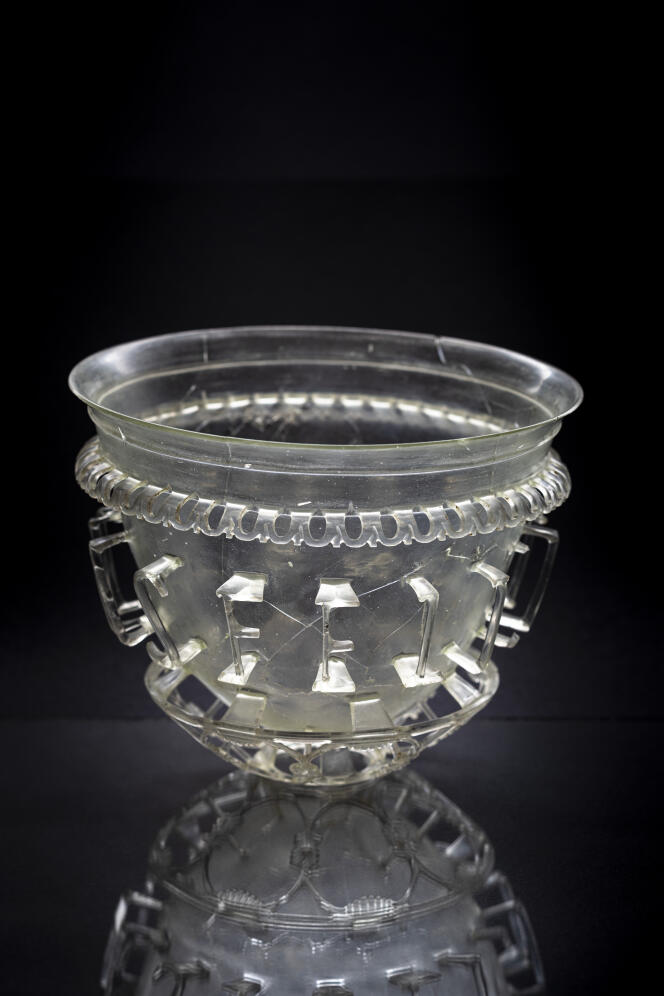

A true survivor. That's the word that comes to mind when you set eyes on the Autun diatrete vase, (also known as a cage cup) on display at the French National Museum of Archaeology in Saint-Germain-en-Laye, west of Paris.

With its limpid clarity, 15 centimeters in diameter and 12.6 centimeters high, the vase could easily be held in one hand. On its side, raised letters stand out to form the words "VIVAS FELICITER" ("live in felicity"). Look a little closer and you can see fine scars running along the vase, discreet evidence of the meticulous restoration work carried out by Katja Broschat at the Römisch-Germanisches Zentralmuseum in Mainz, Germany. A photograph hanging on the wall shows the vase in its pre-restoration state, in dozens of pieces.
"This restorer is the only one authorized to work on Tutankhamun, and she spends half her time in Egypt," said Nicolas Tisserand, archaeologist at the French National Institute for Preventive Archaeological Research (INRAP). "But she's taken this project head on, and she's passionate about it!"
The vase was found in a sarcophagus at the heart of an early Christian necropolis during excavations carried out by INRAP in 2020 at Autun, in central-eastern France. The burials discovered date from the 3rd to the 5th centuries. It is during this period of transition for the town of Augustodunum (which later became Autun) that the exhibition "From One World to Another: Autun from Antiquity to the Middle Ages" has concentrated. The town was booming at the time. It was home to numerous theaters, Gallo-Roman temples and even a center of higher learning, but it was also beginning to imbibe Christian culture with the construction of churches.
In the necropolis, pagans and Christians were laid side by side. In addition to the vase, archaeologists also discovered numerous other buried objects, such as gold jewelry and pins in amber and jet. The remains of a cloth sewn with gold thread are also on display – these may have been a tunic worn over one shoulder by a deceased person.
One question has remained unanswered: To whom did this famous vase belong? Archaeologists have studied it closely and noticed that it had been made using a very special technique: It was cut from a single block of glass. According to Tisserand, "You can see very slight traces of manual abrasion are visible, as if it had been done with sand. We think it takes five years to master the technique and then a year's work" to obtain such a vase. This one was certainly very expensive.
You have 33.23% of this article left to read. The rest is for subscribers only.
